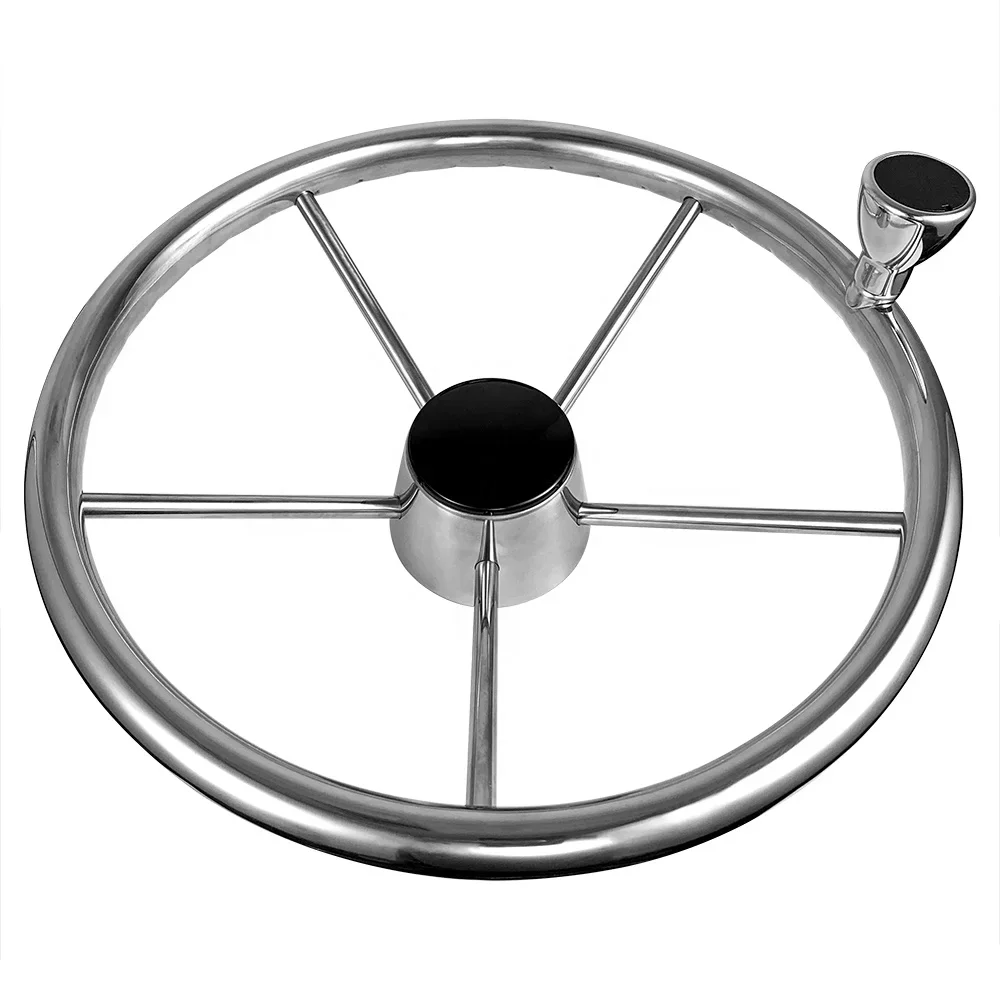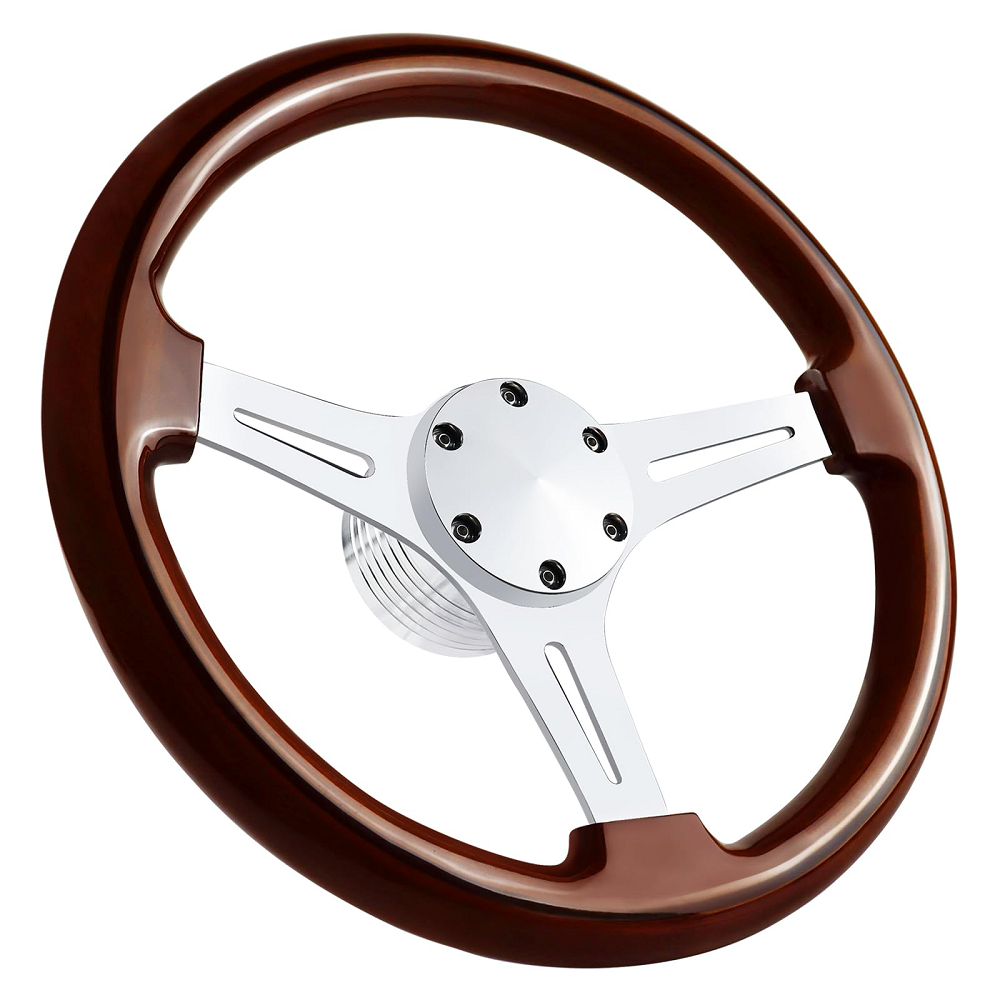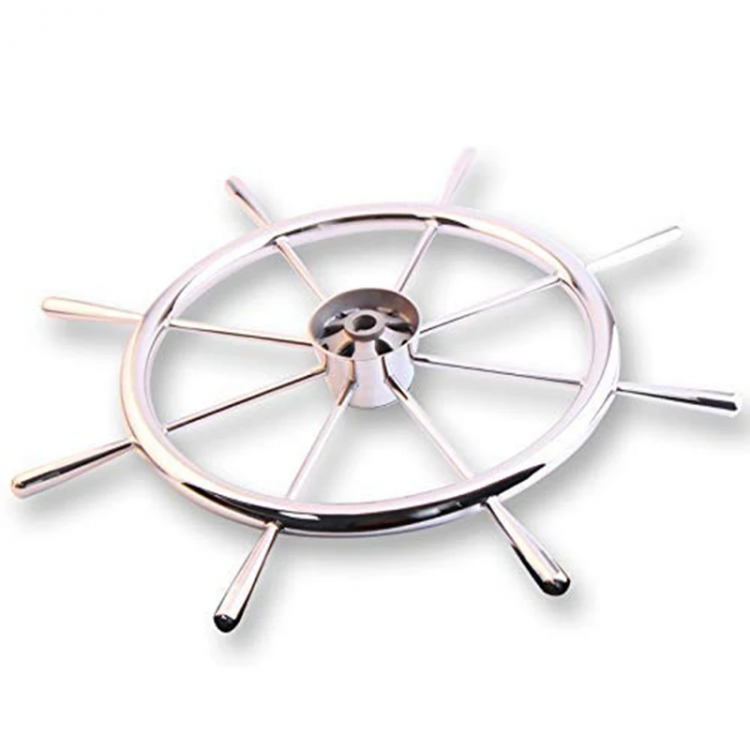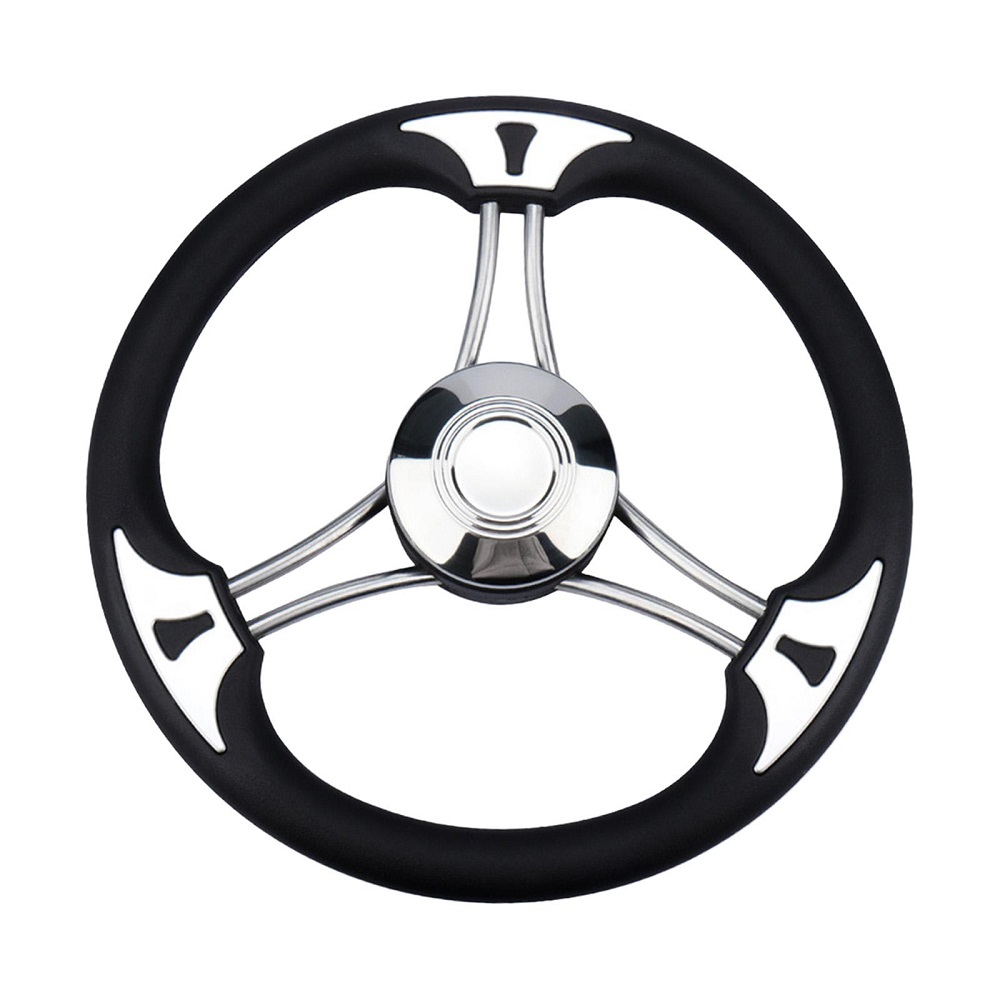Boat steering wheels, also known as helms, are essential components of any marine vessel. These wheels control the direction of the boat, ensuring smooth and precise navigation. Designed for functionality and comfort, boat steering wheels play a significant role in the overall boating experience. This article delves into the various features, types, and importance of boat steering wheels, providing a thorough understanding of their role in maritime activities.
Introduction to Boat Steering Wheels
The Role of Boat Steering Wheels
Boat steering wheels are fundamental to a vessel’s navigation system. They connect to the boat’s rudder or outboard motor through a series of mechanical or hydraulic components. By turning the wheel, the helmsman (person steering the boat) can change the direction of the vessel. This control is crucial for maneuvering through waters safely and efficiently. The design and functionality of boat steering wheels have evolved over the years, offering improved performance and comfort.
Growing Importance
As recreational boating and marine activities continue to grow in popularity, the demand for reliable and high-quality boat steering wheels has increased. Boaters seek steering wheels that provide precise control, enhance comfort, and withstand harsh marine environments. The importance of a well-designed steering wheel cannot be overstated, as it directly impacts the boat’s handling and the helmsman’s ability to navigate effectively.
Design and Construction
Materials and Durability
Boat steering wheels are constructed from various materials, each offering unique benefits. Stainless steel is a popular choice due to its corrosion resistance and durability. It can withstand exposure to saltwater and harsh weather conditions, ensuring a long lifespan. Aluminum is another common material, valued for its lightweight properties and resistance to rust. Some steering wheels feature polyurethane or vinyl grips, providing a comfortable and non-slip surface for the helmsman.
Ergonomics and Comfort
Comfort and ergonomics are crucial aspects of boat steering wheel design. Manufacturers prioritize creating wheels that reduce hand fatigue and offer a comfortable grip. The shape of the wheel, the thickness of the rim, and the texture of the grip all contribute to the overall comfort. Ergonomically designed wheels often feature finger grooves or padded grips, allowing for extended periods of use without discomfort. This focus on comfort ensures that the helmsman can maintain control and precision, even during long boating trips.
Types of Boat Steering Wheels
Traditional Spoke Wheels
Traditional spoke wheels are characterized by their classic design, featuring a central hub and several spokes extending to the rim. These wheels are often made from stainless steel or aluminum, providing strength and durability. Traditional spoke wheels offer a timeless aesthetic, making them a popular choice for sailboats and vintage vessels. Their design allows for easy attachment of accessories, such as knobs or handles, which can enhance control and maneuverability.
Sport and Racing Wheels
Sport and racing wheels are designed for high-performance boats that require quick and precise steering. These wheels are typically smaller in diameter, allowing for faster and more responsive control. Made from lightweight materials such as aluminum or carbon fiber, sport and racing wheels minimize the boat’s overall weight, contributing to improved speed and performance. The design often includes features like ergonomic grips and contoured shapes, ensuring maximum comfort and control during high-speed maneuvers.
Custom and Specialty Wheels
Custom and specialty wheels cater to specific needs and preferences. Boat owners can choose from various designs, materials, and finishes to create a personalized steering wheel. Custom wheels often feature unique engravings, color combinations, or logos, allowing owners to match their vessel’s decor or branding. Specialty wheels, such as those designed for yachts or luxury boats, may include additional features like leather grips, wood accents, or built-in electronic controls. These customized options add a touch of elegance and individuality to the boat’s helm.
Mechanical vs. Hydraulic Steering Systems
Mechanical Steering Systems
They are commonly found in smaller boats and older vessels. These systems use cables and pulleys to connect the steering wheel to the rudder or outboard motor. When the helmsman turns the wheel, the cables transmit the motion, moving the rudder or motor. Mechanical systems are relatively simple, making them easy to maintain and repair. However, they may require more physical effort to operate, especially at higher speeds or with larger boats.
Hydraulic Steering Systems
Hydraulic steering systems are prevalent in larger boats and modern vessels. These systems use hydraulic fluid and pumps to transmit the motion from the steering wheel to the rudder or motor. Hydraulic systems offer smoother and more precise control, requiring less physical effort from the helmsman. They are particularly beneficial for high-performance boats, as they provide quick and responsive steering. While hydraulic systems are more complex and may require professional maintenance, their advantages in comfort and control make them a preferred choice for many boaters.
Installation and Maintenance
Installation Process
Installing a boat steering wheel involves connecting it to the existing steering system, whether mechanical or hydraulic. The process may vary depending on the type of steering system and the boat’s design. For mechanical systems, installation typically includes attaching the wheel to the steering shaft and connecting the cables to the rudder or motor. Hydraulic systems may involve installing hydraulic pumps, reservoirs, and lines, as well as bleeding the system to remove air bubbles. Proper installation is crucial for ensuring the steering wheel’s functionality and the boat’s safety. It is often recommended to seek professional assistance, especially for hydraulic systems.
Maintenance Tips
Regular maintenance is essential for keeping boat steering wheels in optimal condition. For mechanical systems, inspect the cables and pulleys for wear and tear, and lubricate moving parts to ensure smooth operation. Hydraulic systems require checking the hydraulic fluid levels, inspecting hoses for leaks, and ensuring that the system is free of air bubbles. Cleaning the steering wheel and its components with mild soap and water helps prevent corrosion and maintain the wheel’s appearance. Following these maintenance tips can extend the lifespan of the steering wheel and ensure reliable performance during boating activities.
Enhancing Control and Performance
Adding Accessories
Accessories can enhance the functionality and performance of boat steering wheels. One popular accessory is the spinner knob, also known as a suicide knob. It attaches to the wheel and allows for quick, one-handed steering, making it easier to maneuver in tight spaces. Other accessories include steering wheel covers, which provide additional grip and comfort, and decorative elements like custom center caps or engraved nameplates. These accessories not only improve control but also add a personalized touch to the boat’s helm.
Electronic Steering Assist
Electronic steering assist systems, also known as power steering, offer advanced control and ease of use. These systems use electronic sensors and motors to reduce the physical effort required to turn the wheel. They provide smoother and more precise steering, especially at lower speeds or when docking. Electronic steering assist is particularly beneficial for larger boats or vessels with heavy steering loads. While these systems involve additional complexity and cost, their advantages in comfort and control make them an attractive option for many boaters.
Aesthetic Appeal and Personalization
Custom Finishes and Materials
Boat steering wheels can be customized with various finishes and materials to match the boat’s interior and exterior design. Options include polished stainless steel, brushed aluminum, and wood-grain finishes. Custom materials like leather or teak wood can add a touch of luxury and elegance. Personalizing the steering wheel allows boat owners to create a cohesive and visually appealing helm. The choice of finishes and materials can also enhance the helm’s durability and resistance to marine conditions.
Matching Helm Components
To create a unified and stylish helm, boat owners can match the steering wheel with other helm components. This includes selecting compatible throttle controls, gauges, and switch panels. Matching these components in terms of design, color, and material ensures a seamless and coordinated look. Customizing the entire helm area adds a sense of pride and ownership, making the boat feel truly unique. It also enhances the overall aesthetic appeal, creating an inviting and enjoyable environment for boating activities.
Environmental Considerations
Sustainable Materials
As environmental awareness grows, more boat manufacturers are exploring sustainable materials for steering wheels. Eco-friendly options include recycled plastics, bamboo composites, and responsibly sourced wood. These materials reduce the environmental impact of production and offer long-term durability. By choosing steering wheels made from sustainable materials, boat owners can contribute to marine conservation efforts. Supporting environmentally conscious products aligns with the values of reducing ecological footprints and promoting sustainability in the boating industry.
Reducing Pollution
Proper maintenance and responsible use of steering systems can help reduce pollution and environmental impact. Regularly inspecting and maintaining mechanical and hydraulic systems prevents leaks and reduces the risk of hydraulic fluid contamination in the water. Using biodegradable hydraulic fluids and lubricants further minimizes pollution. Educating boaters on eco-friendly practices and encouraging responsible boating behavior contribute to the preservation of marine ecosystems. These efforts ensure a healthier and cleaner environment for future generations of boaters.
Future of Boat Steering Wheels
Technological Advancements
The future of boat steering wheels is likely to see continued technological advancements. Innovations such as fly-by-wire steering, which uses electronic signals instead of mechanical connections, are already making waves. This technology offers even more precise control and reduces the weight and complexity of steering systems. Integration with advanced navigation and autopilot systems further enhances the capabilities of boat steering wheels. As technology evolves, we can expect steering wheels to become more intuitive, efficient, and connected.
Enhanced User Experience
Future developments will focus on improving the user experience of boat steering wheels. This includes ergonomic designs tailored to individual preferences, customizable controls, and integration with smart devices. Advanced materials and manufacturing techniques will enhance durability and comfort. The goal is to provide a seamless and enjoyable steering experience, allowing boaters to navigate with confidence and ease. By prioritizing user experience, manufacturers can create steering wheels that meet the evolving needs and preferences of boaters.
Conclusion
Final Thoughts on Boat Steering Wheels
Boat steering wheels are crucial components that significantly impact the boating experience. Their design, materials, and functionality determine the level of control, comfort, and performance a helmsman can achieve. From traditional spoke wheels to advanced electronic systems, the variety of options available caters to different preferences and needs. Proper maintenance and customization further enhance the steering wheel’s lifespan and aesthetic appeal.
In conclusion, boat steering wheels are much more than mere control mechanisms. They are integral to the overall boating experience, ensuring safety, precision, and comfort. The continuous advancements in technology and materials promise an exciting future for boat steering wheels, offering even greater control and user satisfaction. Investing in a high-quality, well-designed steering wheel enhances the joy and efficiency of boating, making it a worthwhile consideration for any boat owner. Whether for leisure or professional use, a reliable and comfortable boat steering wheel is essential for smooth and enjoyable navigation.



